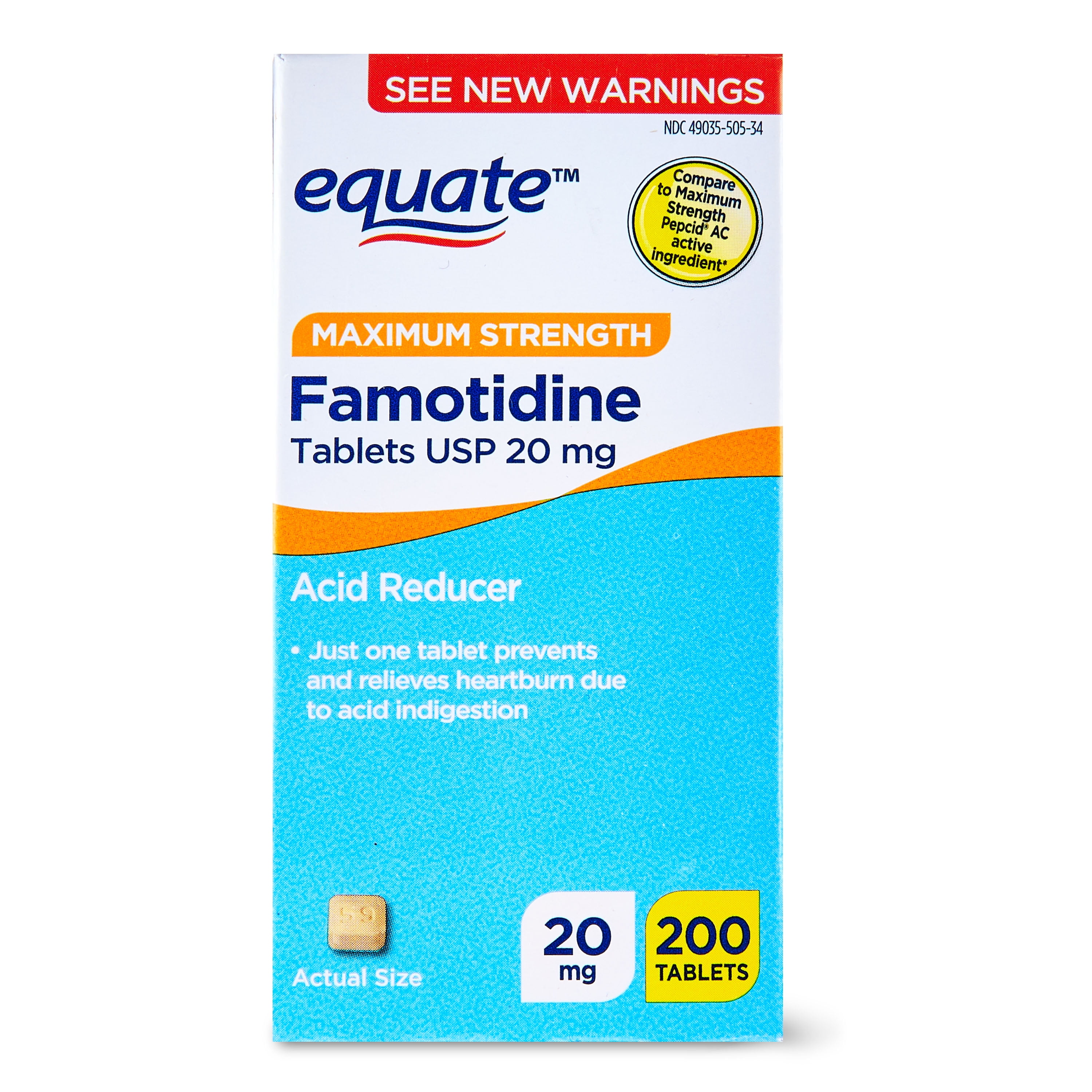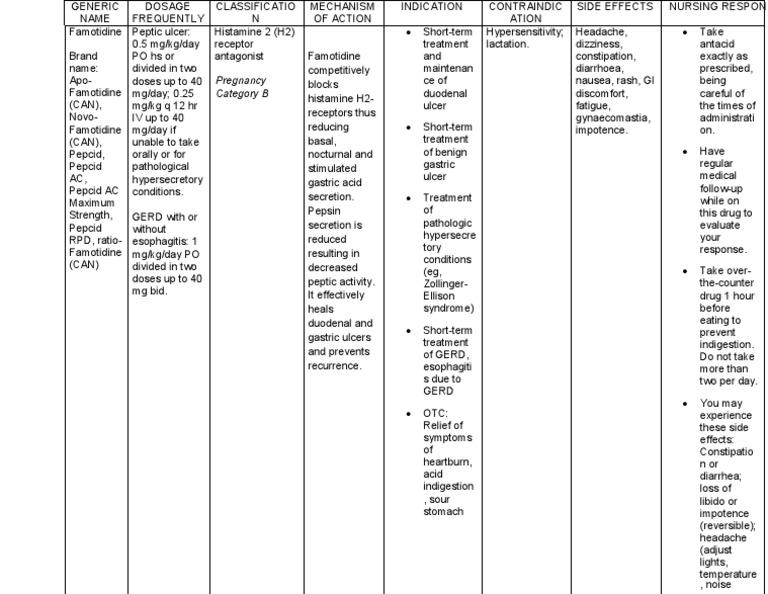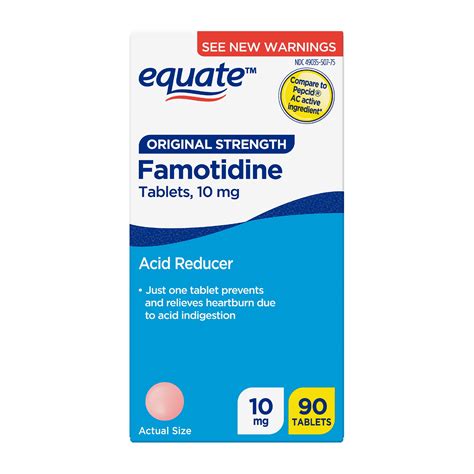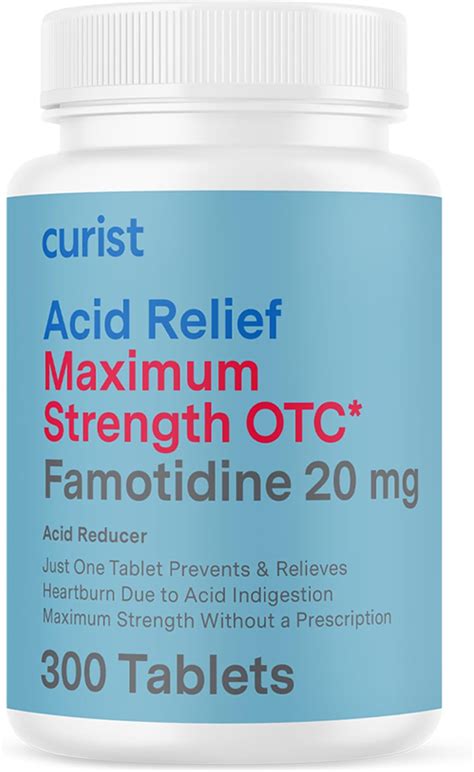Famotidine, a histamine H2-receptor antagonist, has been a cornerstone in the treatment of various gastrointestinal disorders for decades. Its primary function is to reduce the amount of stomach acid produced, thereby alleviating symptoms associated with excessive acid production. This comprehensive guide aims to delve into the uses of famotidine, its mechanism of action, potential side effects, and practical considerations for its administration.
Introduction to Famotidine

At its core, famotidine works by competitively inhibiting histamine at the H2 receptors of the parietal cells in the stomach lining. This inhibition leads to a decrease in gastric acid secretion, which is beneficial in conditions where a reduction in stomach acid is desirable. The drug is rapidly absorbed after oral administration, reaching peak plasma concentrations within 1-3 hours. Its long duration of action allows for once- or twice-daily dosing, depending on the clinical scenario.
Therapeutic Uses
- Gastroesophageal Reflux Disease (GERD): Famotidine is used to treat conditions like GERD, where stomach acid flows back into the esophagus, causing symptoms such as heartburn and regurgitation.
- Peptic Ulcer Disease: It is effective in the treatment and prevention of peptic ulcers, which are open sores that develop on the inside lining of the stomach and the upper portion of the small intestine.
- Zollinger-Ellison Syndrome: This is a rare disorder characterized by excessive acid production in the stomach due to high levels of gastrin (a hormone that stimulates acid secretion). Famotidine can help manage the symptoms by reducing acid production.
- Stress Ulcer Prophylaxis: In critically ill patients, famotidine can be used to prevent stress-induced ulcers, which can be life-threatening.
Side Effects and Considerations

While generally well-tolerated, famotidine can cause side effects, including: - Headache - Dizziness - Constipation or diarrhea - Fatigue - Rash
In rare cases, more serious side effects can occur, such as allergic reactions or interactions with other medications that may lead to reduced efficacy or increased toxicity of either the interacting drugs or famotidine itself.
Practical Administration Considerations
- Dosage: The dosage of famotidine varies depending on the condition being treated. For example, for GERD, a common dose is 20 mg twice daily, while for peptic ulcers, it might be 40 mg once daily at bedtime.
- Administration with Food: It can be taken with or without food. However, taking it with food may help reduce gastrointestinal upset.
- Pregnancy and Breastfeeding: Famotidine is generally considered safe in pregnancy and breastfeeding, but as with any medication, it should be used under the guidance of a healthcare provider.
Comparative Analysis with Other Acid-Reducing Agents
Famotidine belongs to a class of drugs known as H2 blockers, which also includes ranitidine and nizatidine. Proton pump inhibitors (PPIs) like omeprazole and lansoprazole are another class of acid-reducing medications that work by directly blocking the proton pumps in the stomach lining. While both H2 blockers and PPIs are effective in reducing stomach acid, they differ in their onset and duration of action, as well as their potential side effects and interactions.
Future Trends in Acid Reduction Therapy
The landscape of acid reduction therapy is evolving, with ongoing research into new mechanisms of action and more effective or safer treatments. The development of potassium-competitive acid blockers (P-CABs) represents a newer approach, offering a faster onset of action compared to PPIs. Furthermore, the understanding of the microbiome’s role in gastrointestinal health may lead to novel therapeutic strategies that target not just acid reduction but also the overall balance of gut flora.
Decision Framework for Choosing an Acid-Reducing Agent
When deciding between different acid-reducing agents, several factors should be considered, including: - Severity of Symptoms: More severe symptoms may require more potent agents like PPIs. - Duration of Treatment: For short-term use, H2 blockers might be preferable due to their faster onset of action. - Potential Interactions: Patients on multiple medications may benefit from agents with fewer drug interactions. - Side Effect Profile: The choice may also depend on the patient’s tolerance to potential side effects and their individual health status.
Troubleshooting Common Issues with Famotidine

- Rebound Effect: Stopping famotidine after long-term use can lead to a rebound increase in acid production. Gradual tapering or switching to another acid-reducing strategy under medical guidance can mitigate this.
- Incomplete Symptom Relief: If symptoms persist despite adherence to the prescribed regimen, reconsideration of the diagnosis or adjustment of the treatment plan may be necessary.
Resource Guide for Patients
For patients looking for more information or support: - The National Institute of Diabetes and Digestive and Kidney Diseases (NIDDK) offers resources on gastrointestinal diseases and treatments. - Patient advocacy groups, such as the American Gastroenterological Association (AGA), provide educational materials and support for individuals dealing with GERD and other gastrointestinal conditions.
FAQ Section
Is famotidine safe to use during pregnancy?
+Famotidine is generally considered safe during pregnancy, but it should only be used under the guidance of a healthcare provider, as with any medication during this period.
Can famotidine be used for immediate relief of heartburn?
+How long does it take for famotidine to start working?
+Famotidine begins to reduce acid production within an hour of administration, but its peak effect is achieved after a few hours, making it suitable for once- or twice-daily dosing depending on the condition being treated.
Conclusion
Famotidine represents a valuable treatment option for various acid-related gastrointestinal conditions, offering effective symptom relief and prevention of complications. Its use, like any medication, should be guided by a thorough understanding of its mechanism, potential side effects, and practical considerations for administration. As the field of gastroenterology continues to evolve, staying informed about the latest developments in acid reduction therapy will be crucial for healthcare providers and patients alike in making informed decisions about treatment strategies.



